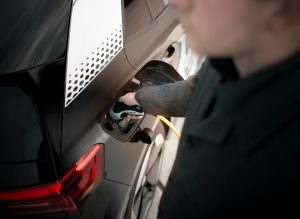Your car is a finely tuned machine, designed to provide reliable transportation. However, when things go wrong, it often sends out warning signals to let you know something’s not right. Ignoring these signs can lead to costly repairs, reduced performance, or even dangerous situations. Here’s a closer look at some of the most common red flags that indicate your car needs immediate attention.
Dashboard Warning Lights: Your Car’s SOS
One of the first things you’ll notice when something goes wrong is a glowing warning light on your dashboard. These lights, such as the check engine light or the oil pressure light, are not to be ignored.
A check engine light, for instance, can signify anything from a loose gas cap to a failing catalytic converter. If the oil pressure light illuminates, it’s a sign of low oil levels or pressure, which could damage your engine if not addressed promptly. Similarly, the battery warning light often points to charging system issues like a faulty alternator.
When a warning light appears, it’s a signal to investigate further or consult a professional mechanic.
Strange Noises: The Sounds of Trouble
Cars are usually quiet, so unusual sounds often mean trouble.
A squealing noise when braking could indicate worn brake pads, while grinding sounds might mean your rotors need attention.
Knocking noises from the engine might signal low-quality fuel or engine misfires.
A rattling noise beneath the car could mean a loose exhaust system or damaged heat shield.
If your steering wheel whines during turns, it may indicate low power steering fluid or a failing power steering pump.
Addressing these sounds early can prevent further damage and ensure your safety on the road.
Smoke, Steam, and Smells: Visual and Olfactory Red Flags
Visual and olfactory cues often accompany mechanical issues.
If you notice blue smoke from the exhaust, it’s a sign your car is burning oil, likely due to worn piston rings or valve seals.
White smoke can indicate a blown head gasket, allowing coolant to mix with engine oil.
A sweet smell is usually linked to a coolant leak, while a burning rubber smell could mean slipping belts or overheating hoses.
Steam coming from under the hood usually points to an overheating engine. Stop driving immediately to avoid further damage.
Performance Problems: When Your Car Feels Off
If your car struggles to accelerate, stalls, or vibrates, it’s time to investigate.
Loss of power or slow acceleration can be due to clogged fuel injectors or a failing fuel pump.
Vibrations while braking might indicate warped brake rotors.
Pulling to one side while driving could mean alignment issues or uneven tire wear.
These symptoms not only affect your car’s performance but can also compromise safety, so don’t delay getting them checked out.
Fluid Leaks: Puddles You Can’t Ignore
Leaking fluids are a clear indicator of underlying issues.
Bright green or orange fluid is often coolant, critical for keeping your engine from overheating.
Dark brown or amber fluid usually indicates an oil leak.
Red fluid suggests a transmission or power steering fluid problem.
If you spot fluid puddles under your car, don’t ignore them—get your vehicle inspected to avoid more serious problems.
Drivability Issues: Wobbling, Shaking, or Pulling
Driving should feel smooth and controlled. If your car wobbles, shakes, or pulls in one direction, there could be a problem with your tires, alignment, or suspension system. Uneven tire wear, for example, often points to alignment issues, while excessive bouncing could mean worn shocks or struts.
These problems, if left unchecked, can lead to unsafe driving conditions or even accidents.
Preparing for Emergencies: What to Do When You Notice Issues
If you notice any of these signs, don’t panic—but don’t ignore them either. Your first step should be to safely pull over if you’re driving and assess the situation. Consult your owner’s manual for guidance on warning lights or symptoms. For more serious issues, contact a professional mechanic or your roadside assistance service.
Fun Facts About Car Maintenance
- The Longest Car Lifespan: A man named Irv Gordon drove his 1966 Volvo P1800 for over 3 million miles, holding the record for the highest mileage ever recorded on a single car.
- The First Check Engine Light: The check engine light, a staple of modern vehicles, first appeared in 1981 when onboard diagnostics became mandatory in cars.
- Most Reliable Car Brands: Toyota and Lexus consistently rank among the most reliable car brands, known for their durability and low maintenance needs.
Conclusion: Don’t Ignore the Signs
Your car has its way of communicating when something is wrong. Paying attention to warning lights, unusual noises, leaks, and performance issues can save you from costly repairs and unsafe driving conditions. By addressing these problems promptly, you ensure your car remains reliable, efficient, and safe on the road. When in doubt, always consult a trusted mechanic—it’s better to catch small issues early than to face bigger problems later.













